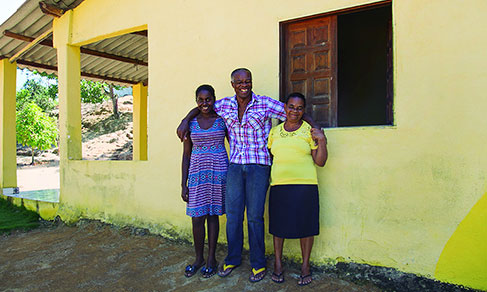Nossos serviços estão apresentando instabilidade no momento. Algumas informações podem não estar disponíveis.
 Experimental Statistics
Experimental Statistics
Emergency dimensioning of resident population in Indigenous and Quilombola areas for actions to fight the pandemic caused by the coronavirus | 2020
 Experimental Statistics
Experimental Statistics
About - 2020
The publication presents the methodological procedures and the results of the emergency dimensioning of residents in Indigenous and Quilombola areas in 2020 for the States and Municipalities of the Federation and for the Federal District, as required by the Ministry of Health pursuant to the National Operationalization Plan for COVID-19 Vaccination.
The statistics published in the study attempted to respond to an emergency in public health, providing estimates on specific populations, about whom data availability is restricted. Therefore, they are classified as experimental and should be used with caution, since they are being tested and under evaluation. By disclosing them, the IBGE intends to involve users and interested parties to assess their relevance and quality, considering the purposes for which they are intended.
In the first item, the questions regarding identification of Indigenous persons (since the 1991 Census) and quilombola persons (to be used for the first time in the 2022 Census) in the Population Census are presented The IBGE mapping of Indigenous and Quilombola areas for enumeration purposes are presented as well.
The second item encompasses the concepts and definitions necessary to the understanding of the methodology applied in the dimensioning and its results, both described in item 3.
In the study, the dimensioning data of residents in Indigenous and Quilombola areas is presented for the Federation Units (Tables 1 and 2) and for:
- 529 Municipalities, statistics for total residents in Indigenous areas are presented in Appendix 1;
- 2,143 Municipalities, statistics are presented for the total number of residents in Quilombola areas, in Appendix 2, including the 864 Municipalities for which, although the presence of Quilombola population was registered, it was not possible to dimension it, listed in Appendix 3.
In the fourth item, limitations regarding the use of these statistics are highlighted and all users should be aware of them. The IBGE reserves itself the right to comment on misuses of these statistics.
 Experimental Statistics
Experimental Statistics
Tables - 2020
Table 1 – Dimensioning of the resident population of Indigenous areas by Federation Unit (xlsx | ods)
Table 2 - Dimensioning of the resident population of Quilombola areas by Federation Unit (xlsx | ods)
Appendix 1 – Dimensioning of the resident population of Indigenous areas by Municipality (xlsx | ods)
Appendix 2 – Dimensioning of the resident population of Quilombola areas by Municipality (xlsx | ods)
Appendix 3 – Municipalities with presence of non-dimensioned Quilombola population (xlsx | ods)
 Experimental Statistics
Experimental Statistics
Publications - 2020
Description
The study Emergency Dimensioning of Resident Population in Indigenous and Quilombola Areas for Actions to Fight the Pandemic Caused by the Coronavirus 2020 is an experimental statistic that was carried out by the Brazilian Institute of Geography and Statistics as a way to support the Ministry of Health with regard to the National Operationalization Plan for COVID-19 Vaccination.
In addition to the statistics resulting from this study, the publication presents the methodological details regarding the work carried out by the IBGE in the production of population information on residents in Indigenous and Quilombola areas, estimated for the year 2020, for States and Municipalities of the Federation, and for the Federal District.
The statistics now released sought to respond to an emergency public health situation, providing estimates on specific populations whose data availability is restricted. They are, therefore, classified as experimental and should be used with caution, as they are being tested and under evaluation. By disclosing them, the IBGE intends to involve users and interested parties to assess their relevance and quality, considering the purposes for which they are intended.
In the publication, limitations regarding the use of these statistics are highlighted and all users should be aware of them. The IBGE reserves itself the right to comment on misuses of these statistics.
News and Releases
IBGE experimental methodology gave support to immunization plan for traditional peoples
The IBGE released today (October 15) the report of the emergency dimensioning of the resident population...
15/10/2021

Estas estatísticas são classificadas como experimentais e devem ser usadas com cautela, pois são estatísticas novas que ainda estão em fase de teste e sob avaliação. Elas são desenvolvidas e publicadas visando envolver os usuários e partes interessadas para avaliação de sua relevância e qualidade. Caso deseje deixar uma crítica ou sugestão, clique aqui para deixar sua opinião.




